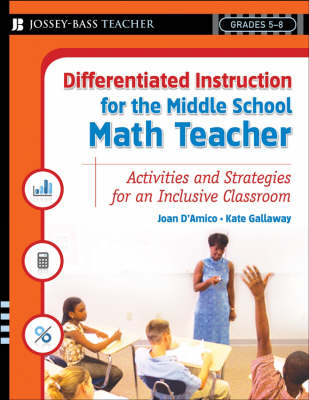Differentiated Instruction for Middle School Teachers
1 primary work • 2 total works
Book 3
Differentiated Instruction for the Middle School Science Teacher
by Joan D'Amico and Kate Gallaway
The third volume in the Differentiated Instruction series, Differentiated Instruction for the Middle School Science Teacher offers teachers proven techniques for designing and delivering effective science instruction, measuring success, getting students to work together, and collaborating with other professionals. The ready-to-use activities are tied to core curriculum standards for middle school students and each lesson incorporates adaptations for students with different learning needs.
- Includes strategies for teaching a standards-based science curriculum
- Contains a wealth of activities that can be adapted for learners of all abilities
- Offers information for delivering effective instruction, measuring success, and student collaboration
The authors, both experienced teachers, offer a range of techniques, such as station/group activities, enrichment activities, and modifications for students with specific disabilities.
Differentiated Instruction for the Middle School Math Teacher
by Joan D'Amico and Kate Gallaway
Each lesson includes: Instructions for presenting the lesson to the whole class Worksheets designed to help review and reinforce theconcepts presented in each lesson A section on how to adapt the lesson for the inclusive classroom, including descriptions of different stations for different learners A home-school connection with family-based everyday math activities Suggestions for how to assess students' grasp of the concepts presented in the lesson

